1.4 — Preferences and Utility
ECON 306 • Microeconomic Analysis • Fall 2020
Ryan Safner
Assistant Professor of Economics
safner@hood.edu
ryansafner/microF20
microF20.classes.ryansafner.com
Consumer's Objectives
What do consumers want? What do they maximize?
Avoid being normative & make as few assumptions as possible
We'll assume people maximize preferences
- WTF does that mean?

Preferences
Preferences I
- Which bundles of (x,y) are preferred over others?
Example:
a=(412) or b=(612)

Preferences II
- We will allow three possible answers:

Preferences II
- We will allow three possible answers:
- a≻b: Strictly prefer a over b

Preferences II
- We will allow three possible answers:
a≻b: Strictly prefer a over b
a≺b: Strictly prefer b over a

Preferences II
- We will allow three possible answers:
a≻b: Strictly prefer a over b
a≺b: Strictly prefer b over a
a∼b: Indifferent between a and b

Preferences II
- We will allow three possible answers:
a≻b: Strictly prefer a over b
a≺b: Strictly prefer b over a
a∼b: Indifferent between a and b
- Preferences are a list of all such comparisons between all bundles
See appendix in today's class page for more.

Indifference Curves
Mapping Preferences Graphically I
For each bundle, we now have 3 pieces of information:
- amount of x
- amount of y
- preference compared to other bundles
How to represent this information graphically?

Mapping Preferences Graphically II
Cartographers have the answer for us
On a map, contour lines link areas of equal height
We will use "indifference curves" to link bundles of equal preference
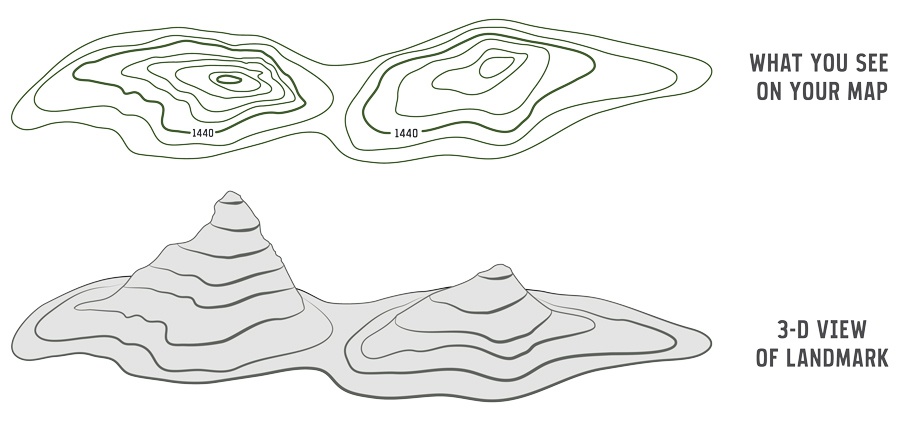
Indifference Curves: Example
Example: Suppose you are hunting for an apartment. You value both the size of the apartment and the number of friends that live nearby.
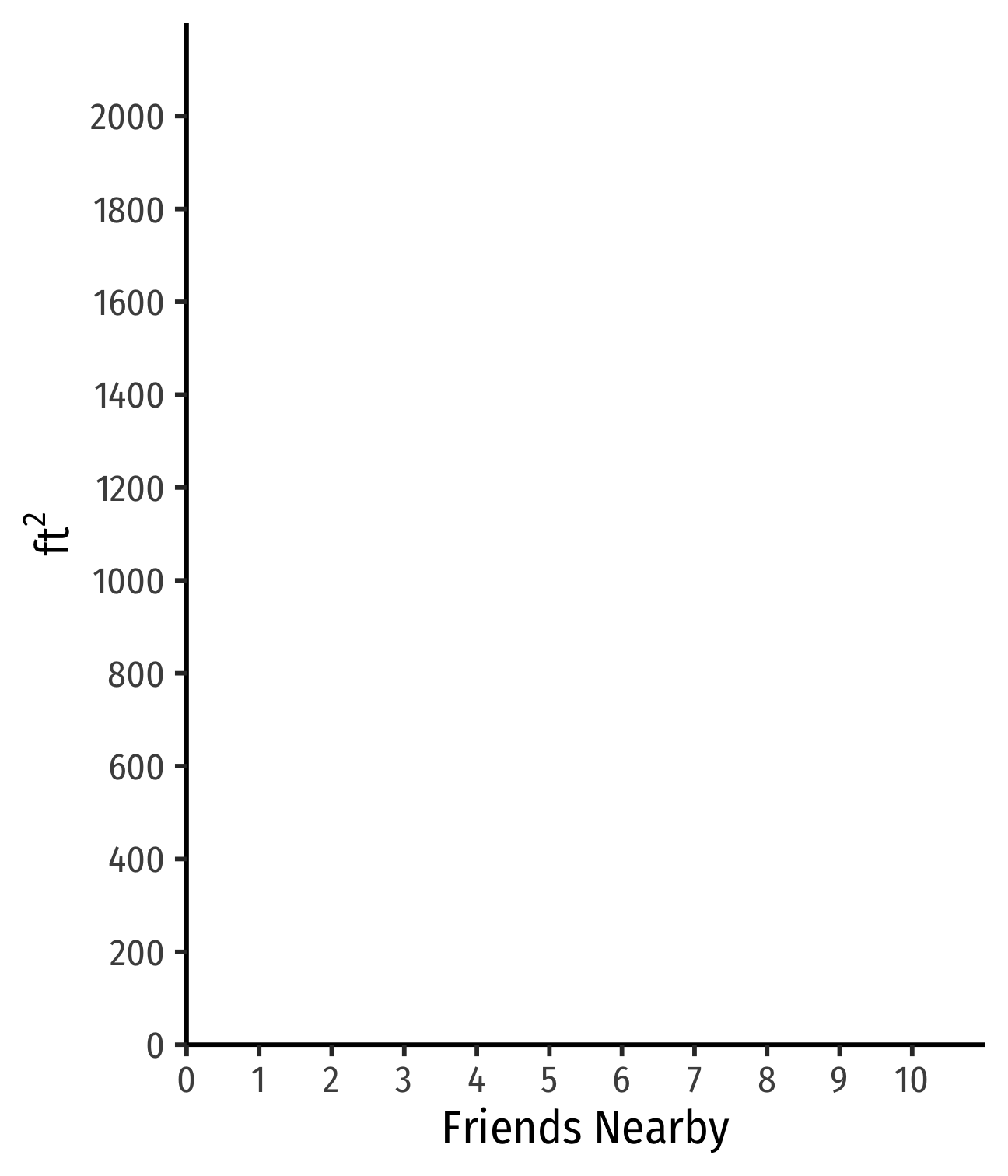
Indifference Curves: Example
Example: Suppose you are hunting for an apartment. You value both the size of the apartment and the number of friends that live nearby.
- Apt. A has 1 friend nearby and is 1,200 ft2

Indifference Curves: Example
Example: Suppose you are hunting for an apartment. You value both the size of the apartment and the number of friends that live nearby.
- Apt. A has 1 friend nearby and is 1,200 ft2
- Apartments that are larger and/or have more friends ≻A
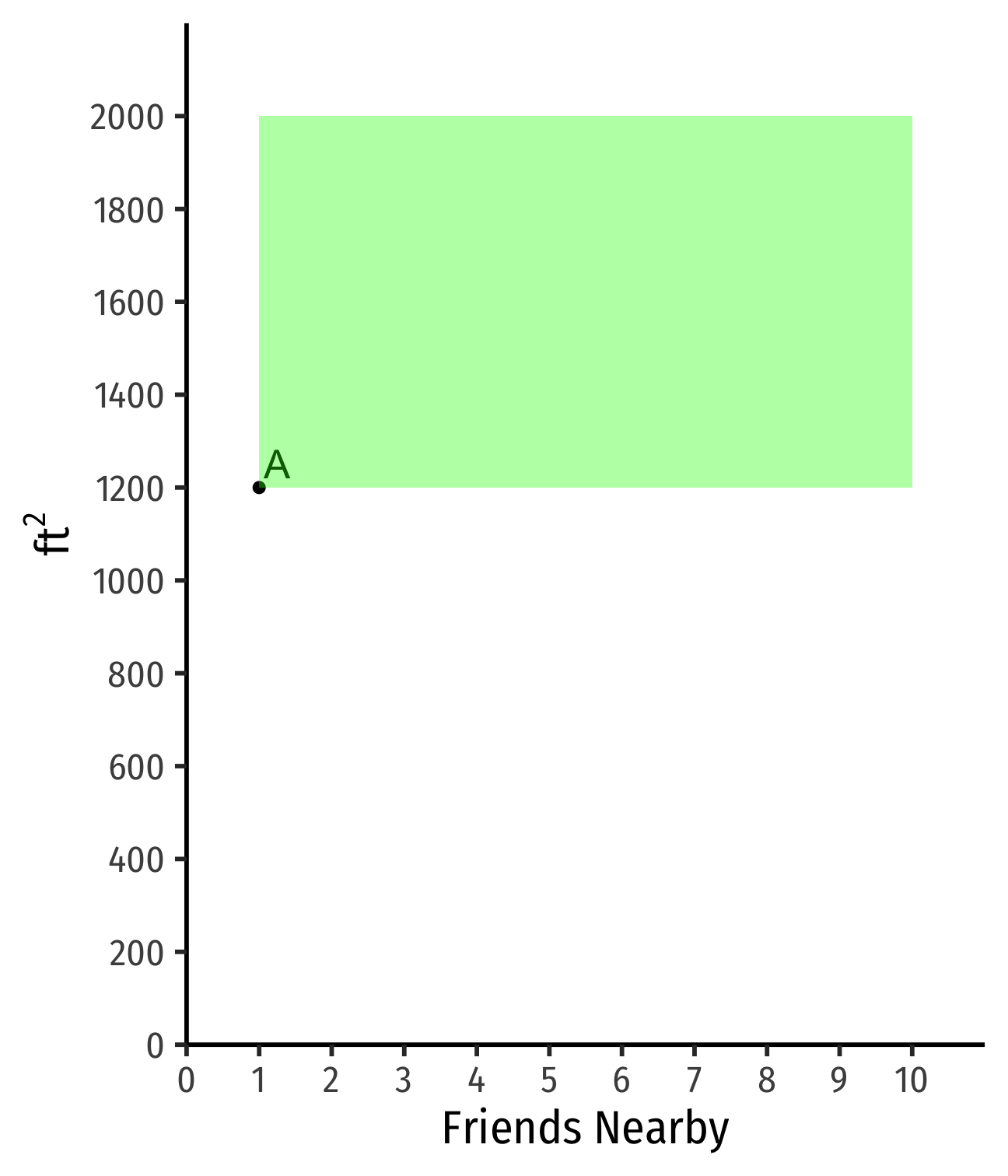
Indifference Curves: Example
Example: Suppose you are hunting for an apartment. You value both the size of the apartment and the number of friends that live nearby.
- Apt. A has 1 friend nearby and is 1,200 ft2
- Apartments that are larger and/or have more friends ≻A
- Apartments that are smaller and/or have fewer friends ≺A
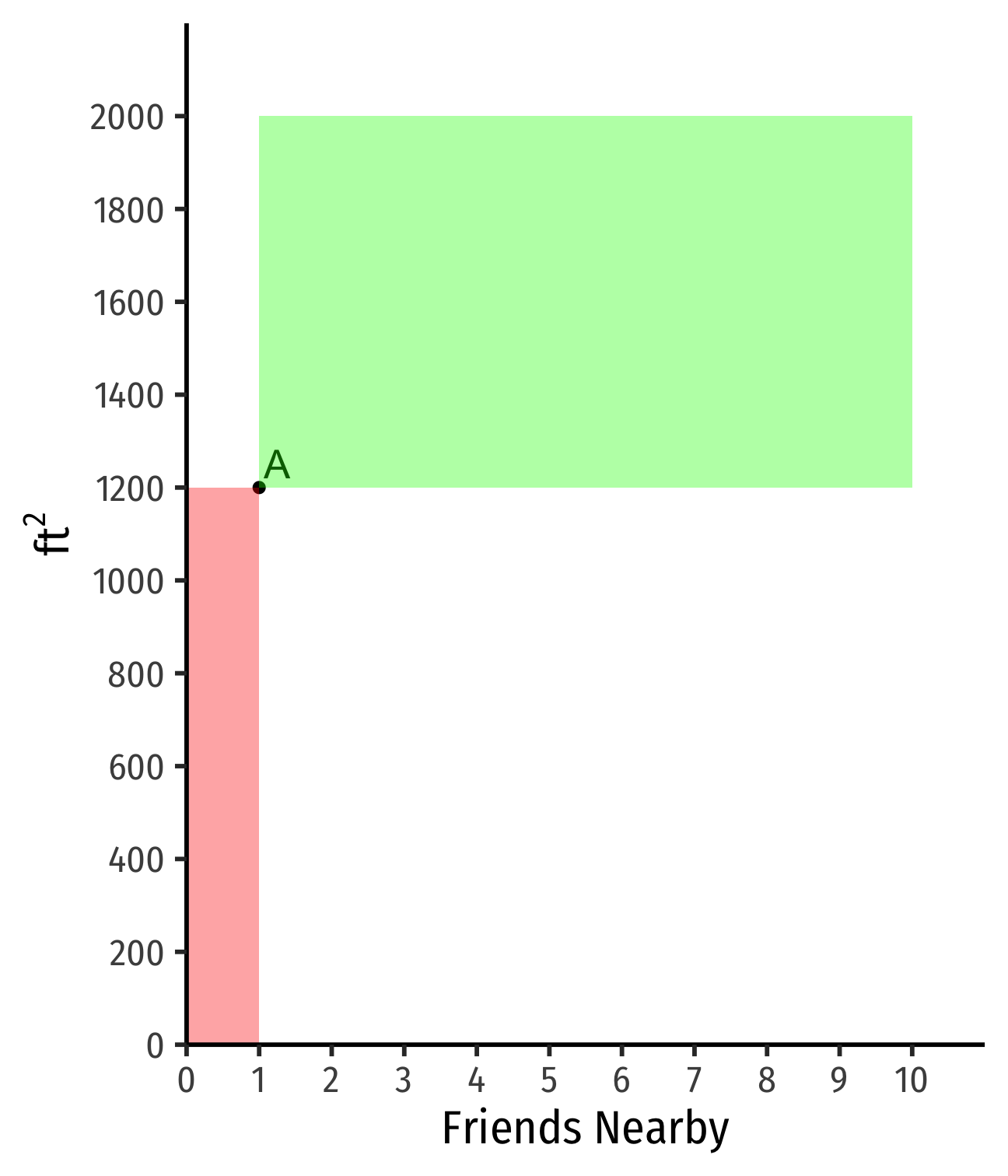
Indifference Curves: Example
Example:
Apt. A has 1 friend nearby and is 1,200 ft2
Apt. B has more friends but less ft2

Indifference Curves: Example
Example:
Apt. A has 1 friend nearby and is 1,200 ft2
Apt. B has more friends but less ft2
Apt. C has still more friends but less ft2

Indifference Curves: Example
Example:
Apt. A has 1 friend nearby and is 1,200 ft2
Apt. B has more friends but less ft2
Apt. C has still more friends but less ft2
If A∼B∼C, on same indifference curve
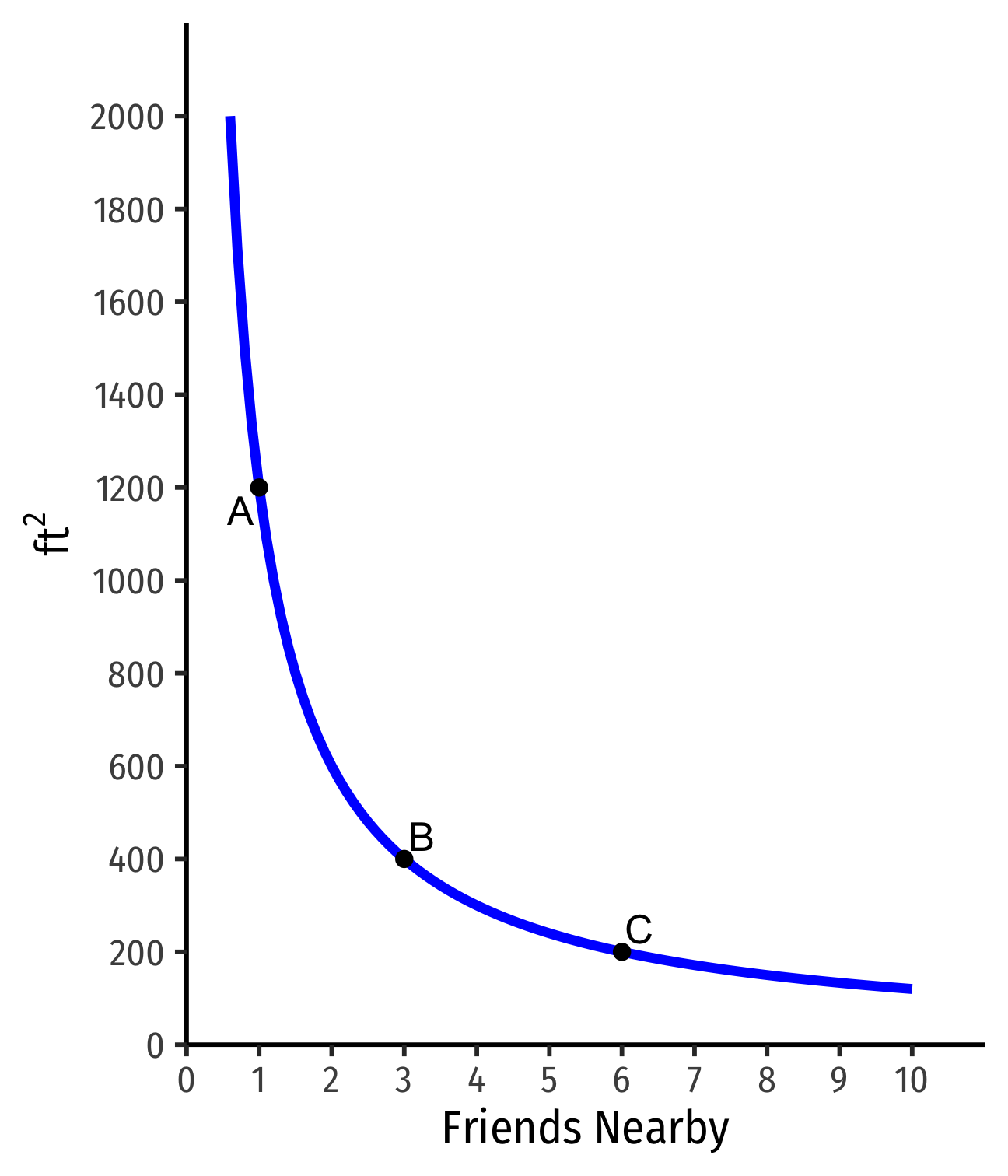
Indifference Curves: Example
- Indifferent between all apartments on the same curve

Indifference Curves: Example
Indifferent between all apartments on the same curve
Apts above curve are preferred over apts on curve
- D≻A∼B∼C
- On a higher curve
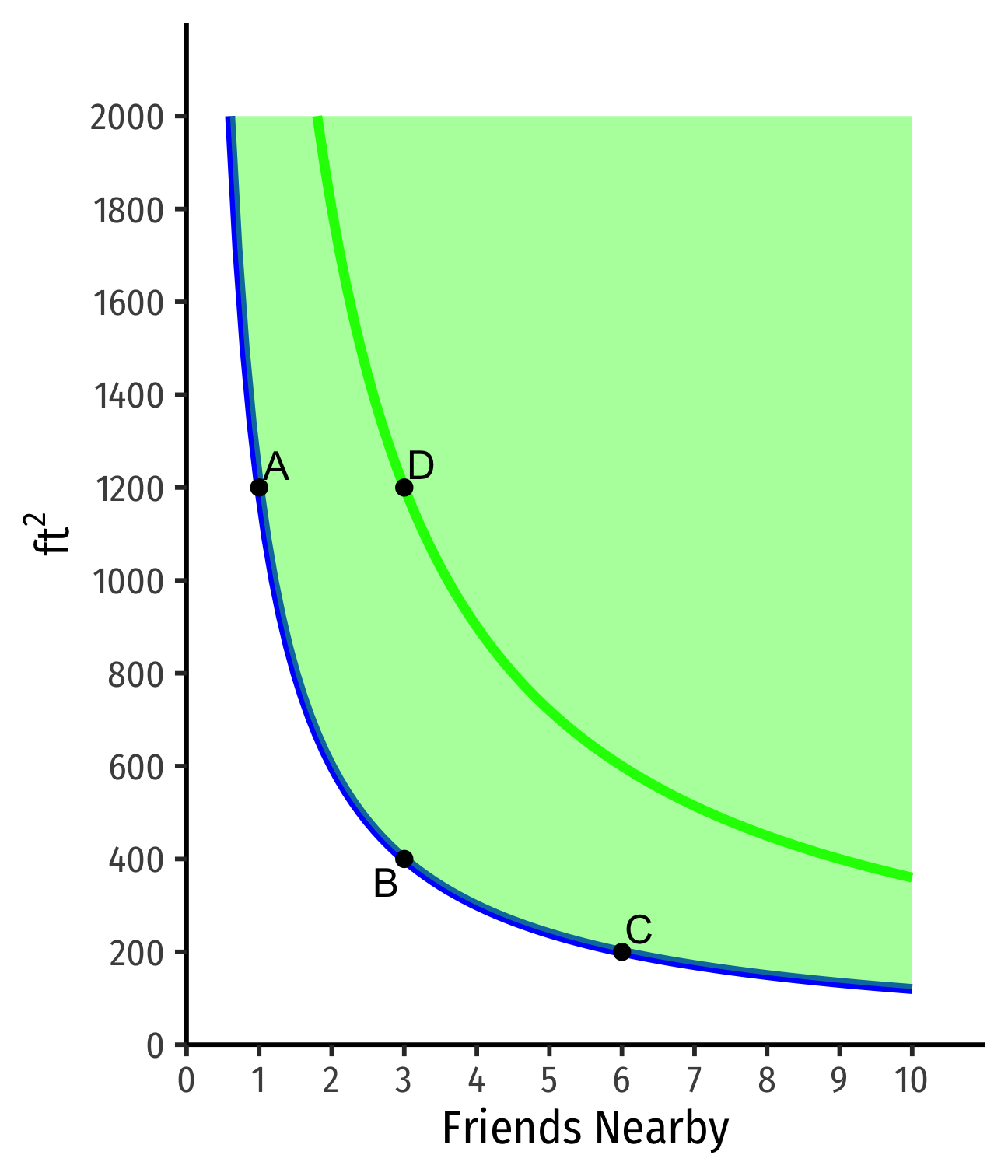
Indifference Curves: Example
Indifferent between all apartments on the same curve
Apts above curve are preferred over apts on curve
- D≻A∼B∼C
- On a higher curve
- Apts below curve are less preferred than apts on curve
- E≺A∼B∼C
- On a lower curve

Curves Never Cross!
- Indifference curves can never cross: preferences are transitive
- If I prefer A≻B, and B≻C, I must prefer A≻C

Curves Never Cross!
Indifference curves can never cross: preferences are transitive
- If I prefer A≻B, and B≻C, I must prefer A≻C
Suppose two curves crossed:
- A∼B
- B∼C
- But C ≻ B!
- Preferences are not transitive!

Marginal Rate of Substitution
Marginal Rate of Substitution I
- If I take away one friend nearby, how many more ft2 would you need to keep you indifferent?

Marginal Rate of Substitution I
If I take away one friend nearby, how many more ft2 would you need to keep you indifferent?
Marginal Rate of Substitution (MRS): rate at which you trade off one good for the other and remain indifferent
Think of this as your opportunity cost: # of units of y you need to give up to acquire 1 more x

MRS vs. Budget Constraint Slope
Budget constraint (slope) measured the market's tradeoff between x and y based on market prices
MRS measures your personal evaluation of x vs. y based on your preferences
Foreshadowing: what if they are different? Are you truly maximizing your preferences?

Marginal Rate of Substitution II
MRS is the slope of the indifference curve MRSx,y=−ΔyΔx=riserun
Amount of y given up for 1 more x
Note: slope (MRS) changes along the curve!
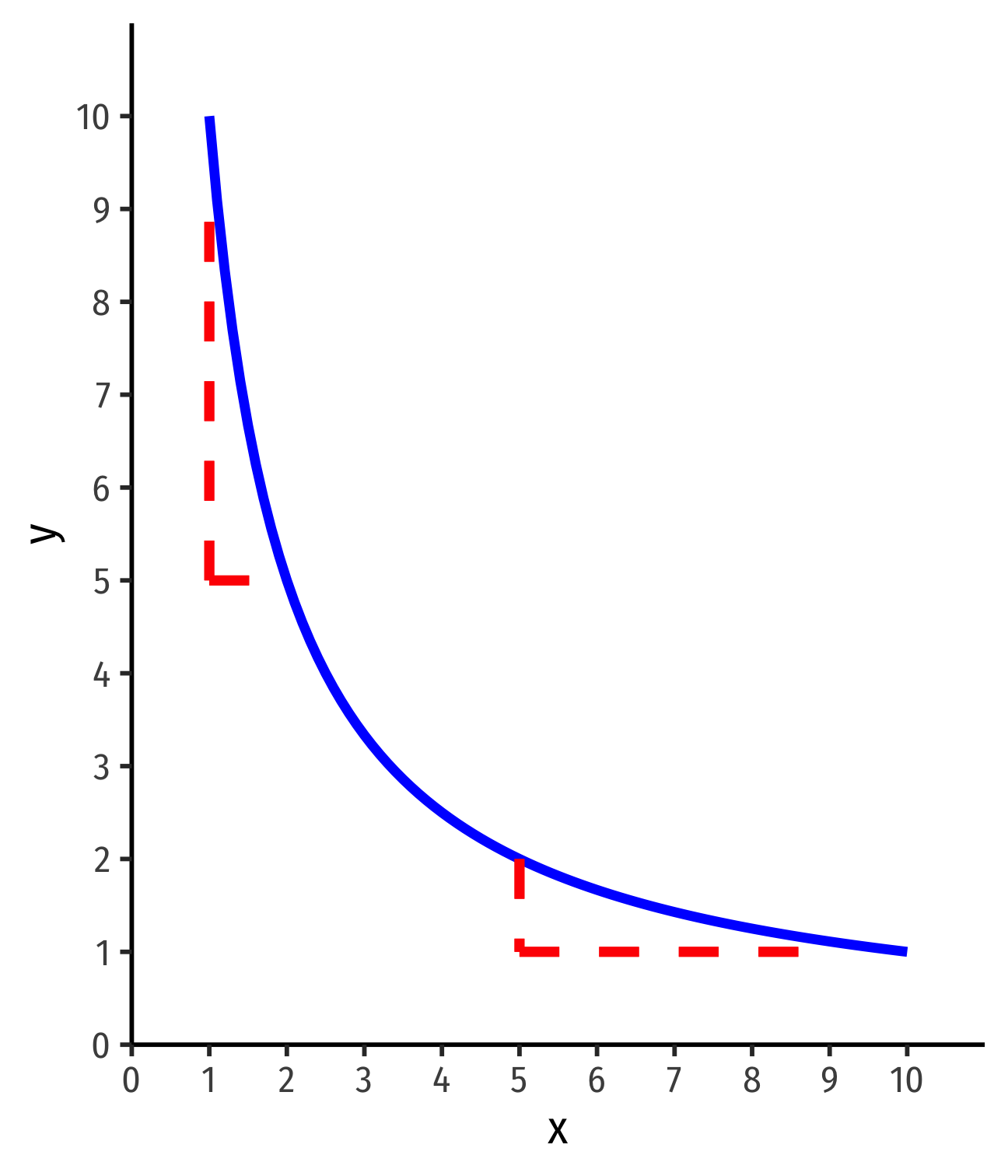
Utility
So Where are the Numbers?
Long ago (1890s), utility considered a real, measurable, cardinal scale†
Utility thought to be lurking in people's brains
- Could be understood from first principles: calories, water, warmth, etc
Obvious problems
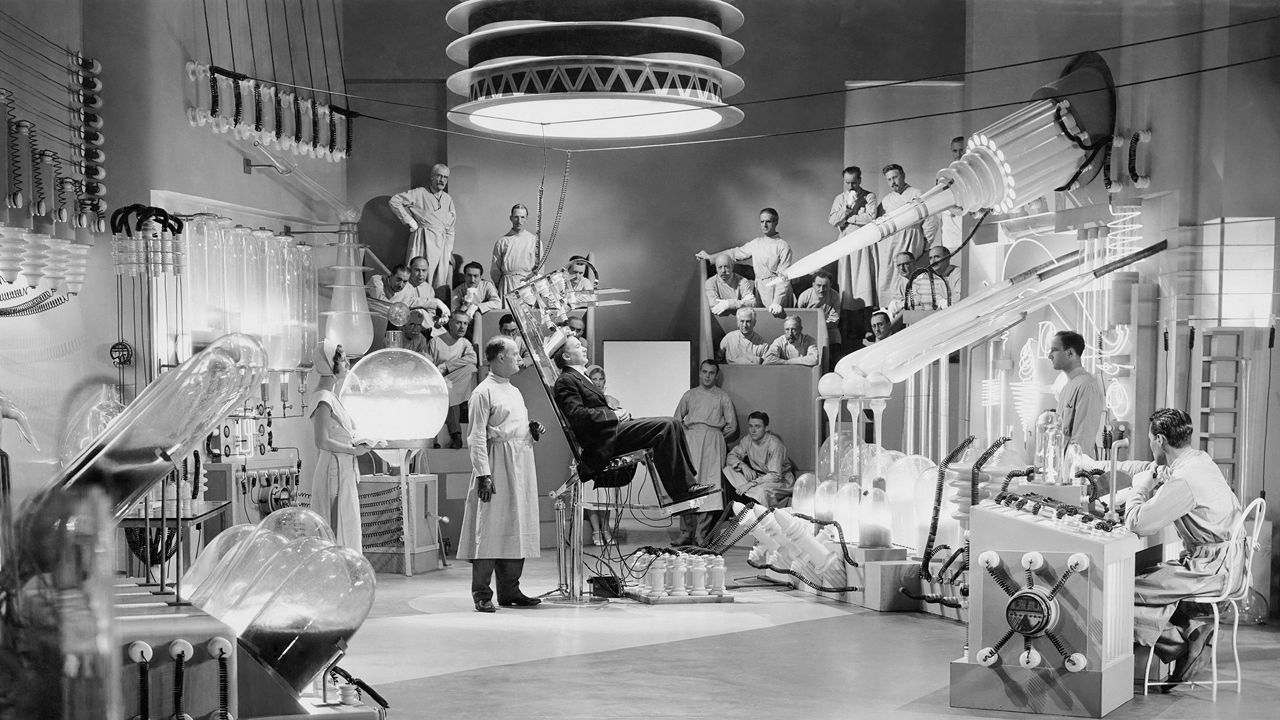
† "Neuroeconomics" & cognitive scientists are re-attempting a scientific approach to measure utility
Utility Functions?
20th century innovation: preferences as the objects of maximization
We can plausibly measure preferences via implications of peoples' actions!
Principle of Revealed Preference: if x and y are both feasible, and if x is chosen over y, then the person must (weakly) prefer x⪰y
Flawless? Of course not. But extremely useful!

Utility Functions! I
So how can we build a function to "maximize preferences"?
Construct a utility function u(⋅)† that represents preference relations (≻,≺,∼)
Assign utility numbers to bundles, such that, for any bundles a and b: a≻b⟺u(a)>u(b)

† The ⋅ is a placeholder for whatever goods we are considering (e.g. x, y, burritos, lattes, etc)
Utility Functions! II
We can model "as if" the consumer is maximizing utility/preferences by maximizing the utility function:
"Maximizing preferences": choosing a such that a≻b for all available b
"Maximizing utility": choosing a such that u(a)>u(b) for all available b
Identical if they contain the same information

Utility Functions, Pural I
- Imagine three alternative bundles of (x,y):
a=(1,2)b=(2,2)c=(4,3)
Utility Functions, Pural I
- Imagine three alternative bundles of (x,y):
a=(1,2)b=(2,2)c=(4,3)
- Create a utility function u(⋅) that assigns each bundle a utility level of
| u(⋅) |
|---|
| u(a)=1 |
| u(b)=2 |
| u(c)=3 |
Utility Functions, Pural I
- Imagine three alternative bundles of (x,y):
a=(1,2)b=(2,2)c=(4,3)
- Create a utility function u(⋅) that assigns each bundle a utility level of
| u(⋅) |
|---|
| u(a)=1 |
| u(b)=2 |
| u(c)=3 |
- Does it mean that bundle c is 3 times the utility of a?
Utility Functions, Pural II
- Imagine three alternative bundles of (x,y):
a=(1,2)b=(2,2)c=(4,3)
- Now consider u(⋅) and a second utility function v(⋅):
| u(⋅) | v(⋅) |
|---|---|
| u(a)=1 | v(a)=3 |
| u(b)=2 | v(b)=5 |
| u(c)=3 | v(c)=7 |
Utility Functions, Pural III
Utility numbers have an ordinal meaning only, not cardinal
- Only the ordering c≻b≻a matters!
Both are valid:†
- u(c)>u(b)>u(a)
- v(c)>v(b)>v(a)

† See the Mathematical Appendix in Today's Class Page for why.
Utility Functions and Indifference Curves I
Two tools to represent preferences: indifference curves and utility functions
Indifference curve: all equally preferred bundles ⟺ same utility level
Each indifference curve represents one level (or contour) of utility surface (function)

Marginal Utility
MRS and Marginal Utility I
Recall: marginal rate of substitution MRSx,y is slope of the indifference curve
- Amount of y given up for 1 more x
How to calculate MRS?
- Recall it changes (not a straight line)!
- We can calculate it using something from the utility function

MRS and Marginal Utility II
- Marginal utility: change in utility from a marginal increase in consumption

MRS and Marginal Utility II
- Marginal utility: change in utility from a marginal increase in consumption
Marginal utility of x: MUx=Δu(x,y)Δx

MRS and Marginal Utility II
- Marginal utility: change in utility from a marginal increase in consumption
Marginal utility of x: MUx=Δu(x,y)Δx
Marginal utility of y: MUy=Δu(x,y)Δy

MRS and Marginal Utility II
Marginal utility: change in utility from a marginal increase in consumption
Math (calculus): "marginal" means "derivative with respect to"
- I will always derive marginal utility functions for you

MRS and Marginal Utility: Example
Example: For an example utility function
u(x,y)=x2+y3
- Marginal utility of x: MUx=2x
- Marginal utlity of y: MUy=3y2
MRS Equation and Marginal Utility

MRS and Preferences
MRS and Preferences: Goods, Bads, Neutrals
More precise ways to classify objects:
A good enters utility function positively
- ↑ good ⟹ ↑ utility
- Willing to pay (give up other goods) to acquire more (monotonic)

MRS and Preferences: Goods, Bads, Neutrals
More precise ways to classify objects:
A good enters utility function positively
- ↑ good ⟹ ↑ utility
- Willing to pay (give up other goods) to acquire more (monotonic)
A bad enters utility function negatively
- ↑ good ⟹ ↓ utility
- Willing to pay (give up other goods) to get rid of

MRS and Preferences: Goods, Bads, Neutrals
More precise ways to classify objects:
A neutral does not enter utility function at all
- ↑,↓ has no effect on utility

MRS and Preferences: Substitutes
Example: Consider 1-Liter bottles of coke and 2-Liter bottles of coke
Always willing to substitute between Two 1-L bottles for One 2-L bottle
Perfect substitutes: goods that can be substituted at same fixed rate and yield same utility
MRS1L,2L=−0.5 (a constant!)

MRS and Preferences: Complements
Example: Consider hot dogs and hot dog buns
Always consume together in fixed proportions (in this case, 1 for 1)
Perfect complements: goods that can be consumed together in same fixed proportion and yield same utility
MRSH,B= ?

Cobb-Douglas Utility Functions
- A very common functional form in economics is Cobb-Douglas
u(x,y)=xayb
- Where a,b>0 (and very often a+b=1)
- Extremely useful, you will see it often!
- Strictly convex and monotonic indifference curves
- Other nice properties (we'll see later)
- See the appendix in today's class page

Practice
Example: Suppose you can consume apples (a) and broccoli (b), and earn utility according to: u(a,b)=2ab
Where your marginal utilities are:
MUa=2bMUb=2a
Put a on the horizontal axis and b on the vertical axis. Write an equation for MRSa,b.
Would bundles of (1,4) and (2,2) be on the same indifference curve?

